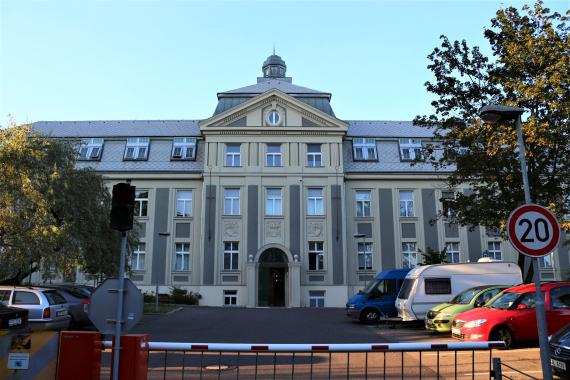Vinohradská 1201/159
Hlavní město Praha
100 00 Praha 10 - Žižkov
Czechia
The origins of the hospital date back to 1888, when the Jewish community of Prague decided to establish a facility for sick and poor members. In 1908, the "Jubilee Foundation of Emperor Franz Joseph for the Sick" acquired the land, and in 1911 the building was erected in the classical modernist style according to the plans of architect Viktor Kafka.
During the Second World War, the site was converted into a Nazi labor camp for people from mixed marriages in 1943, where around 3,500 people were interned and forcibly used to process mica for the company Glimmer--Spalterei GmbH.
In 1945, it was converted into an internment camp for collaborators and deported Germans. In addition to soldiers, Gestapo members, well-known Czech collaborators, people who only spoke German, Hungarians, Romanians and a group of Jewish refugees from Poland also ended up in Hagibor. The internment also affected Czechs who lived in mixed marriages with Germans.
Hagibor subsequently became part of the Vinohrady Hospital, which operated a children's ward there until 2006.
In 2008, the Jewish community of Prague opened the Hagibor retirement home after extensive renovation and expansion. Architects Jan Línek and Josef Kolář created a modern nursing home that is tailored to the needs of older people and places particular emphasis on individual care and dignity.
The name „Hagibor“ means „hero“ in Hebrew and refers to the former Jewish sports club Hagibor, which built a stadium on the extensive grounds in the 1920s.

Add new comment